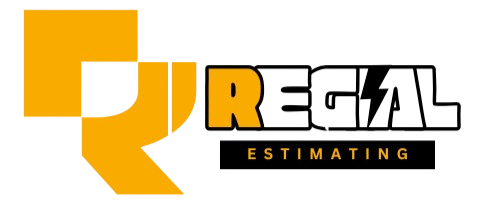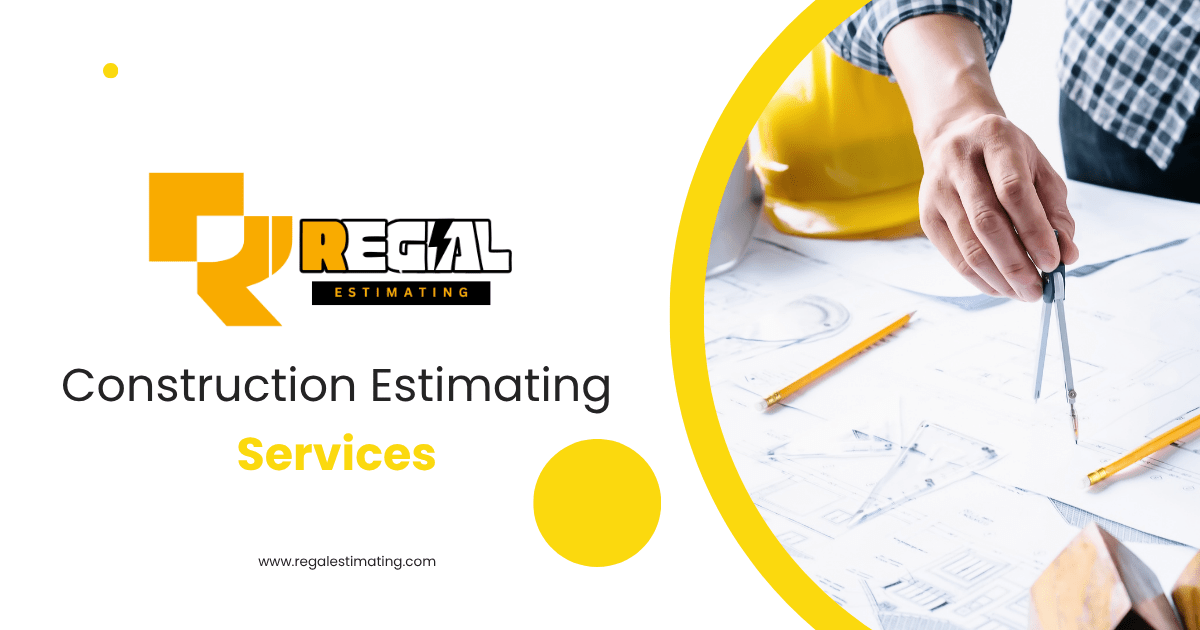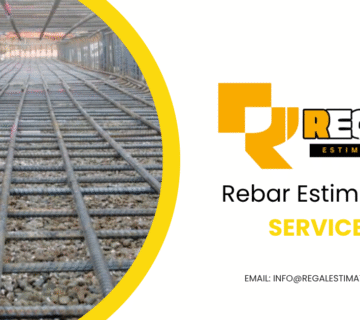Construction Estimating
In the world of construction, success hinges on one crucial element—cost estimating. Whether you’re building a residential home, a commercial plaza, or a public infrastructure project, knowing your budget ahead of time can make or break your entire operation. This is where Regal Estimating steps in as a game-changer, offering precise, professional, and reliable construction estimating services tailored to your project’s needs.
Imagine pouring your savings into a construction project, only to find out halfway that your budget is way off. Scary, right? Construction estimating prevents such nightmares by giving you a financial roadmap from day one. It’s not just about calculating materials and labor—it’s about planning for success.
What is Construction Estimating?
Construction estimating is the process of forecasting the cost of a construction project before the actual work begins. This involves calculating the prices for:
- Materials
- Labor
- Equipment
- Permits
- Overheads
- Profit margins
A construction estimate gives you a full view of what you’re likely to spend and where your money is going. Without it, you’re essentially building blindfolded.
Who Uses Construction Estimating?
Estimates aren’t just for contractors. They’re used by:
- Homeowners planning renovations
- Architects shaping their designs around a client’s budget
- Builders bidding for contracts
- Investors and developers looking at ROI
- Government bodies managing public infrastructure
The Impact of Poor Estimating
Bad estimates can result in:
- Project delays
- Cost overruns
- Legal disputes
- Poor contractor relationships
- Loss of client trust
In contrast, a reliable estimate allows for better decision-making, efficient resource allocation, and happy stakeholders.
Where Regal Estimating Comes In
With years of experience under their belt, Regal Estimating has carved a niche in providing top-notch construction estimating services across the United States. From residential homes to multi-million dollar commercial buildings, their experts deliver clarity and accuracy that builders can depend on.
They don’t just plug numbers into a spreadsheet—they dive deep into every detail, analyze material costs, adjust for regional pricing differences, and account for labor fluctuations. Their estimates are customized, clear, and construction-ready.
“Our mission is to empower our clients with estimates that are accurate, timely, and fully aligned with their project goals,” – Regal Estimating Team
Why Accurate Estimating Is Critical in Construction
Accurate Construction Estimating is the foundation of every successful project. Without it, budgets spiral out of control, schedules get thrown off, and trust between stakeholders can collapse. In today’s fast-paced construction industry—where margins are tight and expectations are high—a small error in cost estimation can lead to massive consequences.
The Cost of Inaccuracy
A minor oversight in estimation—say, underpricing a key material—can have ripple effects throughout an entire project. Here’s what can go wrong with inaccurate cost estimates:
| Issue | Impact |
|---|---|
| Budget Overruns | Projects run out of funding mid-construction |
| Delayed Timelines | Re-budgeting takes time and halts progress |
| Quality Sacrifices | Cheaper, low-quality materials may be used to cut costs |
| Reputation Damage | Clients lose trust, affecting future business |
| Legal Consequences | Disputes over contract costs can lead to litigation |
According to Construction Executive, nearly 9 out of 10 construction projects exceed their budgets due to inaccurate forecasting and cost planning.
Real-World Examples of Construction Estimating Failures
- Berlin Brandenburg Airport (Germany): Estimated at €2.5 billion, the project ballooned to over €7 billion due to underestimating technical complexity and costs.
- Boston’s Big Dig (USA): Initially pegged at $2.8 billion, this mega project ended up costing over $14.6 billion, largely due to poor estimates and unforeseen challenges.
These high-profile failures underscore a universal truth: cost estimating isn’t optional—it’s essential.
The Power of a Detailed Estimate
A well-prepared estimate:
- Identifies potential cost overruns early
- Prepares for financial negotiations
- Aligns all teams on financial expectations
- Increases chances of winning competitive bids
- Reduces the risk of change orders and rework
Contractors, investors, and even public sector planners use detailed estimates to reduce uncertainty and boost profitability.
How Regal Estimating Guarantees Accuracy
At Regal Estimating, precision is not just a goal—it’s a standard. They combine cutting-edge tools, industry experience, and up-to-date cost databases to produce spot-on estimates. Here’s how they do it:
- Use of Digital Takeoff Tools: They ensure exact material measurements and quantities.
- Certified Estimators: Experts review every estimate for accuracy and realism.
- Location-Based Pricing: Adjustments are made based on your project’s region and local market conditions.
- Double-Check System: All estimates are reviewed by at least two professionals before delivery.
LSI Keywords Used in This Section
- Accurate cost analysis
- Construction cost forecasting
- Project budget control
- Estimating failures
- Cost estimating process
- Construction financial planning
Overview of Regal Estimating Services
When it comes to construction estimating, not all service providers are created equal. What sets Regal Estimating apart is their dedicated approach to precision, deep understanding of construction workflows, and commitment to client success. Whether you’re a contractor preparing a competitive bid or a homeowner planning a renovation, Regal delivers clear, accurate, and actionable estimates that keep your project on track from the very beginning.
What Sets Regal Estimating Apart
Here are just a few reasons why Regal Estimating stands out in the industry:
| Feature | Regal Estimating Advantage |
|---|---|
| Experience | Over a decade of hands-on industry experience |
| Specialization | Residential, commercial, and industrial expertise |
| Speed | Fast turnaround times without compromising accuracy |
| Customization | Estimates tailored to project scope, size, and complexity |
| Affordability | Competitive pricing with no hidden fees |
Regal doesn’t take a one-size-fits-all approach. They understand that every project is unique—from site conditions to material preferences—and they reflect that in their estimates.
“We’re more than just estimators. We’re partners in your project’s success.” – Regal Estimating Team
Range of Services Offered
Regal Estimating offers a comprehensive suite of services that cater to all kinds of construction needs:
Residential Estimating
- New home builds
- Room additions
- Renovations and remodeling
- Roofing, siding, and concrete work
Commercial Estimating
- Office buildings
- Retail stores
- Warehouses
- Restaurants
Industrial Estimating
- Factories
- Warehouses
- Heavy civil and infrastructure projects
Specialty Services
- Quantity Takeoffs – Detailed breakdown of materials
- Preliminary Estimates – For early-stage planning and budgeting
- Change Order Estimates – Updates when project scope shifts
- Bid Preparation Support – Full documentation to win competitive bids
This wide range of services ensures that no matter your role in the construction process, Regal Estimating has a service designed to meet your specific goals.
Deliverables You Can Expect
When you hire Regal Estimating, here’s what you typically receive:
- Itemized Estimates: Clear breakdown of labor, materials, and overhead
- Material Takeoff Sheets: Quantities calculated using digital takeoff software
- Project Timelines: Estimated duration for each stage of the build
- Markup Recommendations: Profit margins aligned with industry standards
- Regional Cost Adjustments: Tailored to your location and project conditions
All deliverables are shared in easy-to-use formats like PDF, Excel, or custom templates as per client preference.
Who Uses Regal Estimating Services?
- Contractors & Builders: For accurate bids and project planning
- Architects & Designers: To align design with client budgets
- Homeowners & Developers: To plan renovations and new builds confidently
- Engineers & Consultants: For technical and feasibility assessments
Compliance & Accuracy Standards
Regal Estimating follows industry-standard guidelines including:
- CSI MasterFormat Division Standards
- RSMeans Cost Data
- ASTM Construction Estimating Practices
Their estimates are compliant, auditable, and designed for use in permitting, financing, and bidding.
LSI Keywords in This Section
- Professional cost estimating services
- Quantity takeoff services
- Residential estimating solutions
- Commercial cost estimates
- Project cost forecasting
- Construction estimating company USA
Types of Construction Estimates
Not all construction estimates are created equal. Depending on the project phase, detail level, and client requirements, different types of estimates come into play. Regal Estimating offers a wide spectrum of estimating services tailored to every project stage—from conceptual designs to detailed execution.
Understanding these different types is crucial to ensure that your estimate matches your current needs and goals.
Preliminary Estimates
Also known as: Budgetary or Rough Order of Magnitude (ROM) Estimates
These are initial estimates prepared during the earliest phases of a project, often before complete drawings or specifications are available. They’re useful for:
- Feasibility studies
- Securing initial funding
- Comparing alternative design options
Key Features:
- Based on historical data, square footage, or unit cost
- Accuracy: ± 25% to 40%
- Quick to produce
🛠 Example: Estimating the cost to build a 3-bedroom home using historical cost per square foot in a specific region.
Detailed Estimates
Also known as: Definitive or Final Estimates
These are prepared when complete project documents are available, such as drawings, specifications, and scope. They are ideal for:
- Bid submissions
- Final budgeting
- Construction planning
Key Features:
- Includes every item of cost (materials, labor, equipment, overhead, profit)
- Accuracy: ± 5% to 10%
- Requires more time and effort
🛠 Example: A contractor preparing a bid for a commercial office building based on full architectural and engineering drawings.
Quantity Takeoffs (QTO)
These are detailed measurements of all the materials needed for a project, used to build accurate estimates or purchase orders. It is the core of most estimates.
Key Features:
- Counts, lengths, areas, and volumes of all construction elements
- Used to generate material and labor costs
- Performed using digital takeoff software
Services Include:
- Concrete quantities
- Drywall and framing
- Roofing materials
- Plumbing and electrical components
🛠 Example: A subcontractor uses QTO data to prepare pricing for drywall installation in a 10-story building.
Unit Cost Estimates
Used in projects where work is divided into repetitive units (like square footage, per window, per door). It’s ideal for fast pricing of modular work.
Key Features:
- Quick comparison between different suppliers or systems
- Easy to scale as project grows
- Common in remodeling and renovation projects
🛠 Example: Estimating tile installation at $6 per square foot in a 1,000 sq ft area.
Change Order Estimates
Construction plans often change mid-project. Regal Estimating provides updated cost projections when changes arise—ensuring transparency and documentation.
Key Features:
- Documents added costs due to design revisions
- Supports negotiation between owner and contractor
- Maintains budget control
🛠 Example: Recalculating the cost of upgrading windows from standard to energy-efficient models after construction has started.
Which Estimate Do You Need?
| Project Stage | Best Estimate Type | Accuracy Range |
|---|---|---|
| Conceptual/Planning | Preliminary Estimate | ± 25–40% |
| Bidding/Execution | Detailed Estimate | ± 5–10% |
| Material Analysis | Quantity Takeoffs | High accuracy |
| Mid-Project Changes | Change Order Estimate | Varies |
| Modular/Repetitive Tasks | Unit Cost Estimate | Varies |
How Regal Customizes Your Estimate Type
Regal Estimating doesn’t force you into a template—they evaluate your needs and offer the most suitable estimate type, combining tools like RSMeans, PlanSwift, and Bluebeam to deliver value every time.
Whether you’re in the design stage or ready to break ground, their team ensures that your estimate is accurate, actionable, and aligned with your goals.
LSI Keywords Used in This Section
- Detailed construction estimating
- Quantity takeoff reports
- Budget construction estimating
- Project cost breakdown
- Types of building estimates
- Change order pricing
Estimating Tools and Software Used by Regal Estimating
In today’s construction landscape, accuracy and speed are more important than ever. Regal Estimating takes full advantage of modern digital tools and industry-grade software to ensure that every estimate is not just fast—but also highly accurate and reliable. These tools help eliminate human error, increase efficiency, and deliver precise quantities and pricing down to the smallest detail.
Let’s break down the primary technologies and platforms used by Regal Estimating to enhance their service quality.
Digital Takeoff Tools
Manual measurements are a thing of the past. Regal Estimating uses cutting-edge digital takeoff software to streamline the process of measuring and quantifying construction materials.
Top Takeoff Tools Used:
| Tool | Purpose | Key Feature |
|---|---|---|
| PlanSwift | On-screen takeoffs | Drag-and-drop area selection, real-time cost calculations |
| Bluebeam Revu | PDF-based quantity takeoffs | Advanced markup tools, integrated with design drawings |
| STACK | Cloud-based estimating | Multi-user collaboration, quick project comparison |
These tools allow estimators to:
- Quickly measure dimensions from digital blueprints
- Export quantities directly into spreadsheets
- Minimize calculation errors
- Ensure consistency across different estimators
Cost Database Systems
Having real-time access to up-to-date pricing is essential. Labor and material costs change depending on location, market demand, and inflation. Regal Estimating leverages industry-trusted cost databases to stay ahead of the curve.
Key Databases:
| Database | Functionality |
|---|---|
| RSMeans | National average construction costs for materials, labor, and equipment |
| Craftsman Book Company | Regional cost guides for residential and commercial projects |
| BNi Costbooks | Up-to-date pricing for specialty trades and public works |
For detailed and region-specific construction cost data, Regal Estimating relies heavily on RSMeans Data Online by Gordian, a trusted source in the construction industry for accurate pricing and cost analysis.
Estimating & Project Management Software
In addition to takeoff and cost data tools, Regal Estimating utilizes powerful project management platforms to deliver organized, traceable, and professional estimates.
Software Suite Includes:
- Microsoft Excel (Customized Templates): For final cost sheets and client-friendly deliverables.
- QuickBooks: Used for integration with financial systems (when clients request it).
- ProEst & Buildertrend: Advanced platforms for comprehensive project estimation and tracking (used in complex commercial jobs).
Benefits of Using Estimating Software
Using this technology stack provides numerous advantages:
- Faster Turnaround: Estimates that used to take days are now ready in hours.
- Greater Accuracy: Fewer manual errors and better quality control.
- Scalability: Easily manage small renovations or multi-million dollar builds.
- Enhanced Collaboration: Share and review estimates with clients or subcontractors in real-time.
- Audit Trails: All actions are documented—useful for legal or compliance needs.
When Tech Meets Expertise
While software provides the tools, it’s Regal’s human expertise that makes the magic happen. Their estimators know how to interpret architectural drawings, identify potential cost risks, and make adjustments that no machine could spot alone.
The combination of technology + experience is what puts Regal Estimating ahead of the competition.
LSI Keywords Used in This Section
- Construction estimating software
- Digital takeoff solutions
- RSMeans construction data
- Material cost tracking tools
- Quantity estimation technology
- Cloud-based estimating systems
Process of Construction Estimating at Regal Estimating
Delivering accurate and reliable construction estimates is not just about tools or numbers—it’s about having a well-defined process that ensures consistency, transparency, and precision. Regal Estimating has refined its estimating workflow over the years to create a system that’s both efficient and detail-oriented.
From blueprint review to final delivery, each estimate goes through multiple quality checks and validations, ensuring clients receive a document they can trust for bidding, budgeting, or building.
Step-by-Step Breakdown of Regal Estimating’s Process
Step 1: Initial Consultation
Every estimate begins with a conversation. Regal’s team connects with the client to:
- Understand the scope of the project
- Determine the type of estimate required (preliminary, detailed, takeoff, etc.)
- Clarify timelines, formats, and special requests
This ensures the estimate is customized and aligned with the client’s goals from day one.
Step 2: Document Collection
The client sends all relevant project documentation, including:
- Architectural and engineering drawings
- Specifications and scope statements
- Material preferences
- Project location details
Regal accepts a wide range of formats including PDFs, CAD files, Excel sheets, and cloud-based design documents.
Step 3: Drawing Review & Scope Verification
Expert estimators carefully review drawings to:
- Verify dimensions and scales
- Identify project complexities or inconsistencies
- Highlight missing information
They may reach out for clarification or RFIs (Request for Information) to prevent errors early.
Step 4: Quantity Takeoff Using Digital Tools
Using platforms like PlanSwift or Bluebeam, Regal performs a comprehensive digital takeoff, identifying:
- Material quantities (e.g., concrete, rebar, drywall)
- Area, volume, and linear measurements
- Labor and equipment needed for installation
Each measurement is stored and categorized for easy reference and updating.
Step 5: Cost Application from Verified Databases
Next, quantities are priced using location-specific costs from trusted sources like:
- RSMeans
- BNi Costbooks
- Craftsman Book Data
Labor rates are adjusted based on:
- Union vs non-union labor
- Project location
- Trade specialization
Overheads, profit margins, and contingencies are also factored in to reflect real-world market conditions.
Step 6: Review, Quality Control & Internal Checks
Before delivery, every estimate goes through a two-tier quality review:
- Technical Review: Checks calculations, scope alignment, and measurements
- Managerial Review: Verifies format, pricing consistency, and overall presentation
This dual-check system drastically reduces errors and increases client trust.
Step 7: Final Report Delivery
The final estimate is delivered in the client’s preferred format (PDF, Excel, or editable sheet). Each report includes:
- A cover sheet summarizing the project
- Itemized cost breakdown
- Material takeoff tables
- Markup percentages (if applicable)
- Terms and notes
Clients can then use this document for:
- Bidding on contracts
- Loan or financing applications
- Procurement planning
- Internal budget approvals
What Makes This Process Effective?
Regal Estimating’s process is built around four key values:
- Accuracy: Every number is backed by data and verified.
- Clarity: Reports are easy to understand, even for non-technical clients.
- Speed: Turnaround times are fast without sacrificing quality.
- Flexibility: Estimates are tailored to the client’s workflow, whether they’re an architect, contractor, or developer.
Real-Life Example of Process in Action
Client: Commercial builder in Chicago
Project: 3-story mixed-use retail complex
Challenge: Needed a detailed estimate within 5 business days to win a bid
Solution:
- Regal Estimating used Bluebeam for takeoff
- Applied RSMeans Chicago-specific pricing
- Delivered a 32-page PDF with clear sections for materials, labor, equipment, and markup
Result: Client won the bid and saved 6% on actual construction costs due to accurate budgeting.
Summary of the Estimating Process
| Step | Description |
|---|---|
| 1 | Client Consultation |
| 2 | Document Collection |
| 3 | Drawing Review |
| 4 | Quantity Takeoff |
| 5 | Costing & Pricing |
| 6 | Review & Quality Control |
| 7 | Final Report Delivery |
LSI Keywords in This Section
- Construction estimate process
- How construction estimating works
- Quantity takeoff workflow
- Project cost analysis steps
- Blueprint estimating services
- End-to-end cost estimation
Frequently Asked Questions (FAQs)
What is a construction estimate?
A construction estimate is a detailed forecast of all expected costs involved in a construction project, including materials, labor, equipment, permits, overhead, and profit. It’s a financial roadmap that helps you plan, budget, and execute a project successfully.
How long does it take Regal Estimating to complete an estimate?
The timeline depends on the complexity and scope of the project. However, most estimates are completed within 2 to 5 business days. For rush jobs or urgent bids, Regal offers expedited estimating services upon request.
Can Regal Estimating handle large commercial or industrial projects?
Yes. Regal Estimating has experience with large-scale commercial, industrial, and government projects, including multi-million-dollar developments. Their team is equipped to handle complex documents, high-volume takeoffs, and strict regulatory standards.
How accurate are Regal’s construction estimates?
Regal Estimating’s accuracy level is typically within ±5% of actual construction costs, thanks to their certified estimators, multi-layer review process, and real-time cost data integration.
What formats are the final estimates delivered in?
Estimates are typically delivered in PDF, Microsoft Excel, or client-specific templates. The documents are clear, organized, and ready to be used for bids, financing, or internal budgeting.
Does Regal Estimating offer ongoing support after delivering the estimate?
Yes. Regal provides post-estimate support which includes clarification, revisions (if needed), and assistance during bidding or negotiations. They’re available to answer questions even after the estimate is delivered.
Are the estimates location-specific?
Absolutely. Regal uses location-based pricing data from sources like RSMeans and regional suppliers, ensuring that material and labor costs reflect your actual market conditions.





[…] Construction Estimating […]
[…] Construction Estimating […]